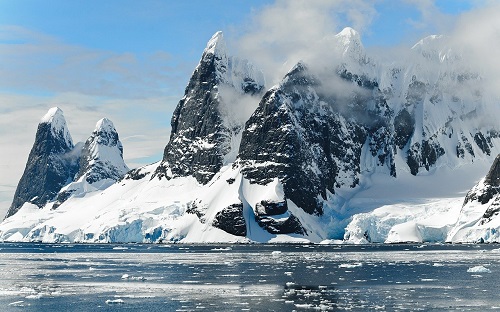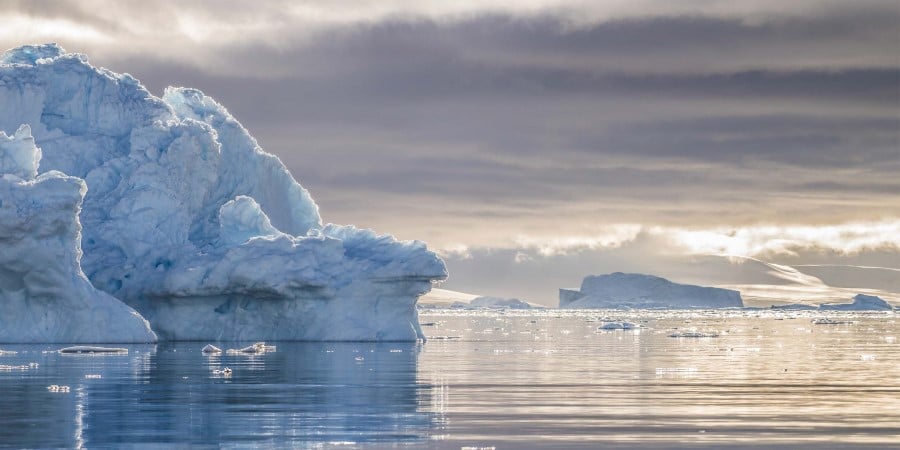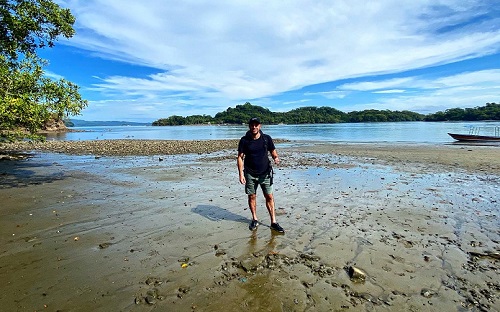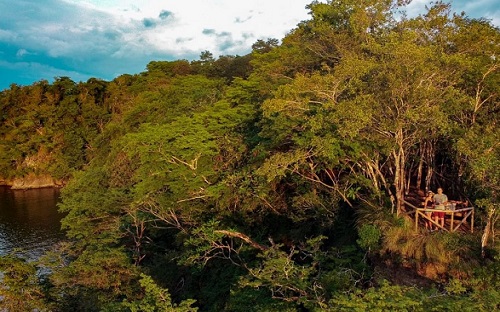
15 Interesting Facts About Antarctica
HURTIGRUTEN
On the southernmost tip of the planet sits one of the world’s most massive and mysterious landmasses: the frozen realm of Antarctica.
The icy expanse of Antarctica covers more than 5.4 million square miles, making it the fifth-largest continent in the world. It is situated almost entirely within the Antarctic Circle, which means that temperatures are consistently below zero the majority of the year. Such conditions make life relatively sparse compared to other regions in the world, but the animals that do occupy this frosty landscape are well adapted to handle the incredibly harsh conditions seen regularly by the explorers and scientists stationed there. While the landscape may seem somewhat desolate to the untrained observer, it is actually one of the most interesting places on Earth.
Here are some interesting facts about Antarctica.
1. It is Home to the Driest Place on Earth
The Dry Valleys in Antarctica are the driest places on earth. With such low humidity and moisture at this portion of the continent, even snow and ice cannot accumulate, which leaves the valleys just a dusty expanse of dirt.
2. It is Windy
Antarctica’s geography and climate means it gets a special kind of wind called katabatics. These are winds that are formed when air moves down a slope. In Antarctica, the mountain range paired against large, flat expanses makes for a dramatic wind combination. Some of the highest wind speeds in history have been recorded on the southern continent – in fact, scientists exploring this southerly landmass have reported wind speeds that have reached up to 200 miles per hour.
3. Seriously Thick Ice
One of the most fascinating things about Antarctica is that it is, in fact, a landmass. The Antarctic ice sheet is the single biggest mass of ice in the world and can be over 2 miles thick.
4. Abundant Resources
The continent as a whole contains about 90% of the planet’s freshwater ice and around 70% of the total freshwater on Earth! Scientists claim that if the West Antarctic Ice Sheet were to melt, it would raise global sea levels by about 16 feet.
5. An Ice Shelf the Size of France
The Ross Ice Shelf – a floating shelf of ice that extends off the continent’s main landmass – encompasses more than 197,000 square miles and is the largest ice shelf that has ever been discovered.
6. Massive Mountains
While Antarctica is covered in ice, it actually holds one of the world’s biggest mountain ranges – the Gamburtsev Mountains, which stretch out more than 750 miles. The highest peaks are estimated to be around 9,000 feet, or about one-third the heigh of Earth’s tallest mountain: Mount Everest. A good portion of these mountains are buried beneath Antarctica’s ice and snow, but many of the peaks are steep enough to be snow-free.
7. Hidden Lakes
Another interesting geographic feature hidden under the ice sheet is Lake Vostok, a freshwater lake buried under 2.5 miles of frozen water. This lake is about the size of Lake Ontario and is one of more than 200 different bodies of water that have been discovered beneath the ice. The most exciting part: These lakes are absolutely teeming with microscopic life. Scientists can use water samples to learn about how these miniscule creatures survive in such a harsh environment. This could even give researchers an idea for how life might survive on other planets, such as below the ice found on Mars.

8. A Trench Deeper than the Grand Canyon
While the Grand Canyon is largely considered to be the planet’s biggest natural rift, scientists discovered another trench on Antarctica that could rival one of America’s mightiest natural features. The unnamed canyon was found during a 2010 expedition and extends 62 miles, is more than 6 miles wide, and reaches nearly 1.5 times deeper than the Grand Cayon. Scientists speculate that it could be even larger, but further exploration is required to learn the true boundaries of this massive rift.
9. Volcanic Activity
There are plenty of extinct volcanoes in Antarctica, but there are two active ones, as well. One of these is at Deception Island, and it’s an incredibly interesting and rare type of volcano. Located far beneath Antarctica’s ice, it has subglacial eruptions, which means that all of Deception’s activity happens below the surface of the ice. Antarctica’s other active volcano, Mount Erebus, is picture perfect. It is the southernmost active volcano in the world and is home to the only known ‘lava lakes’, which have held liquid magma for eons despite the continent’s frigid conditions.
10. A Research Hotspot
Though there are no truly permanent residents in Antarctica, there are people there all year round. The continent’s isolation and harsh climate, though difficult to live in, make it perfect for all manner of study. Researches stay in Antarctic bases and study the continent’s life, geography and temperature. It’s also a prime location for astronomers – the clear conditions and near-permanent darkness in winter make for ideal stargazing.
There are 30 different countries that operate 80 research stations situated around the continent. The researchers who occupy these facilities number around 4,000 during the summer months and only around 1,000 during the long, harsh winters.
11. Babies of Antarctica
In January of 1979, Emile Marco Palma became the first person to be born on Antarctica. Since then, only ten other people have been born on the continent.
12. Midnight (or Absent) Sun
When you travel to Antarctica, you’ll get to see one of the most fascinating sights in the world: the midnight sun. South of the Antarctic circle, there is a period of months when the sun never sets. Summers near the south pole are perpetually bright, which means you can sit outside and read at midnight, if you like.
Researchers who stay all year round also experience the opposite – permanent Antarctic darkness. However, tourists can only see this astronomical event in the Arctic circle, as Antarctica’s tourist season ends after summer.
13. Meteorite Heaven
If you’ve ever wanted to search for a meteorite, Antarctica is the place to do it. The continent has earned a reputation for being perfect for finding fallen space rocks. There are two main characteristics that make Antarctica so great for meteorite enthusiasts: the white expanse and the ice drifts. The monochromatic landscape makes the dark rocks stand out, and the ice drifts tend to drop them all off in the same area. The result is easy-to-find space stuff.
14. Massive Ice Chunks
In March of 2000, an ice chunk broke off the Ross Ice Shelf that was 170 miles long and 25 miles wide – roughly the size of the state of Connecticut.
15. The Lake that Never Freezes
Deep Lake in East Antarctica is so salty that it never completely freezes. The lake’s salinity levels are 10 times higher than the ocean which makes the waters ones of the least productive ecosystems in the world. The high salt levels also mean that even with water temperatures as low as -4° F, the lake remains liquid.
Original Post: https://www.hurtigruten.com/destinations/antarctica/inspiration/15-interesting-facts-about-antarctica/





